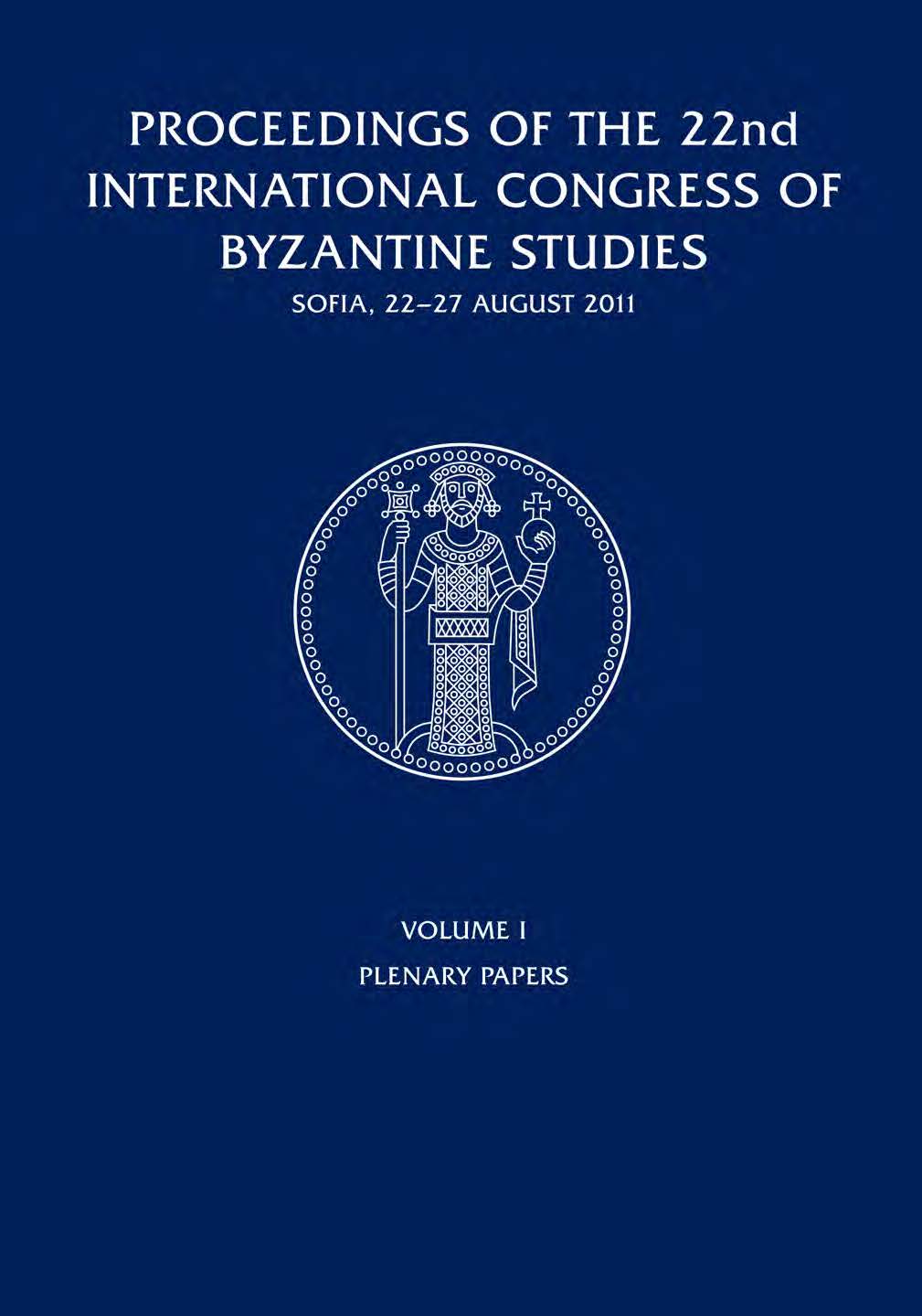



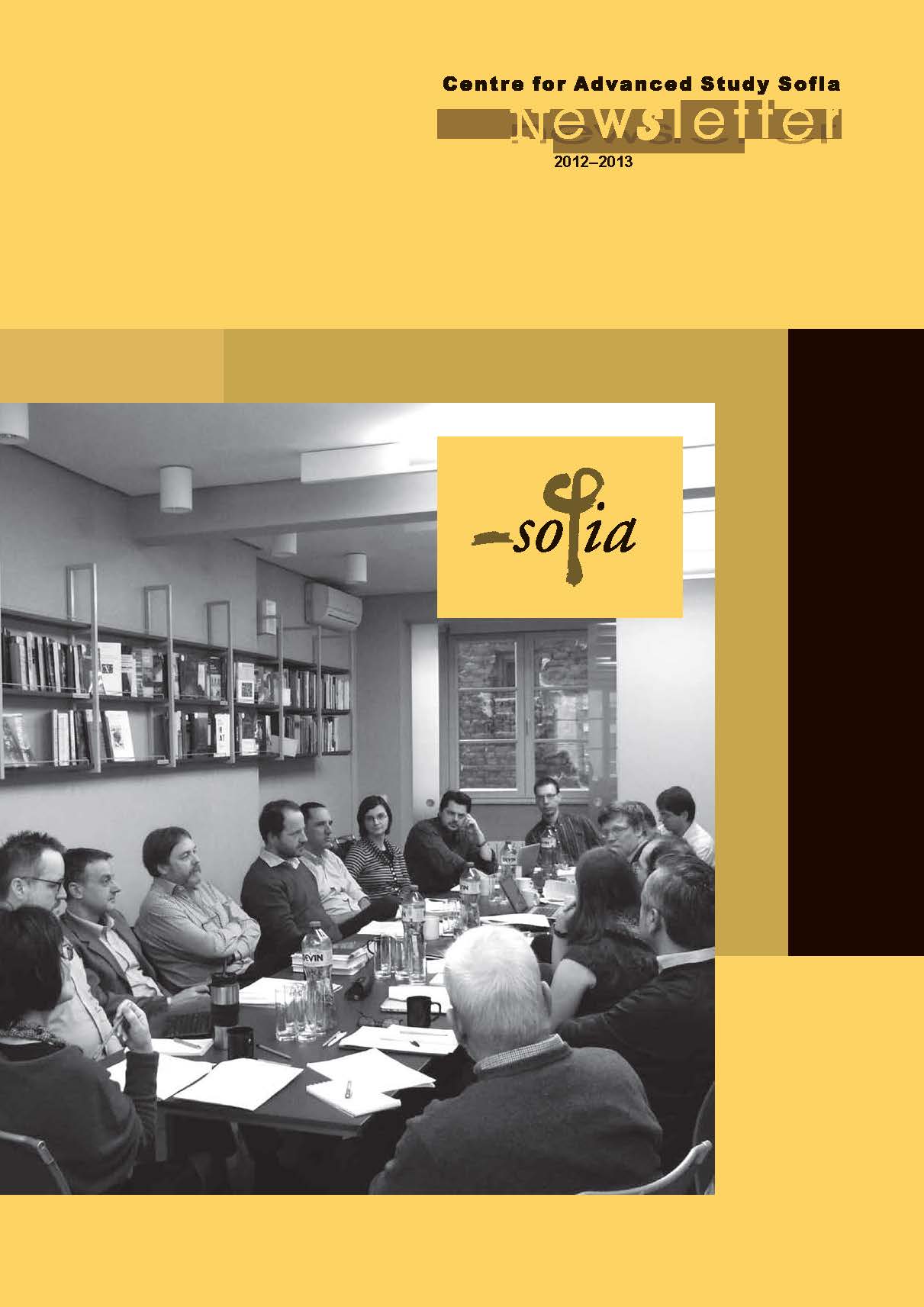
Keywords: Centre for Advanced Study; CAS; CAS-Sofia; Newsletter; CAS Newsletter; CAS Newsletter 2012-2013
Articles, pictures and interviews can be reprinted only with the consent of Centre for Advanced Study Sofia (CAS - Sofia). Any citations should be duly acknowledged.
More...
Keywords: Centre for Advanced Study; CAS; CAS-Sofia; Newsletter; CAS Newsletter; CAS Newsletter 2011-2012
Articles, pictures and interviews can be reprinted only with the consent of Centre for Advanced Study Sofia (CAS - Sofia). Any citations should be duly acknowledged.
More...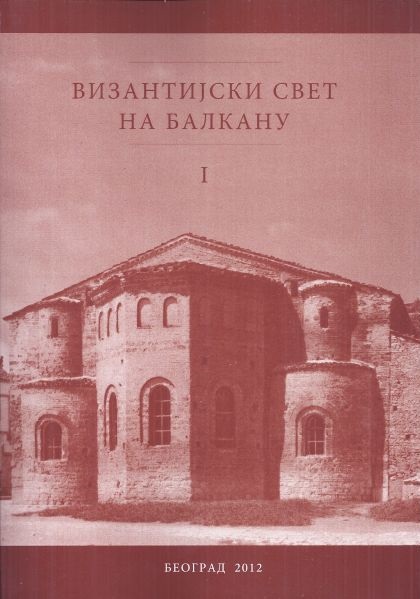
The group of scenes of Pilate’s Court in the Monastery of King Marko represents the most developed example of this iconographic theme in the fresco painting. It consists of seven episodes. They are part of the Passion cycle and are painted in the third register of the western wall of the naos. The first scene illustrates the verses of John 18:33–38, Matthew 27:11, Luke 23: 3, Mark 15:2 : ‘Are you the King of the Jews?’ The second is described in John 18:38 and Luke 23:5. Pilate says to the Jews: ‘I find in him no fault at all.’ The third scene is also according to John 19:10, describing Pilate when he said to Jesus: ‘Are You not speaking to me? Do You not know that I have power to crucify You, and power to release You?’.The fourth depicts the moment when Pilate said to the Jews, "You take Him and judge Him according to your law," (John 18:31). In the fifth scene Pilate brought Jesus out and sat down in the judgement seat in a place that is called ‰TheŠ Pavement, but in Hebrew, it is Gabbatha (John 19:13). For the previous scenes there are no analogies which could enrich the iconographic analyses. They demonstrate a narrative attitude and a close connection to the Gospels — their textual source. The most prominent iconographic elements are the depictions of Domus Pilati, Gabbatha and Lithostraton, which indicate the interest in the Loca sancta of Jerusalem. The next scene is the Flagellation of Christ. Its iconography extends over the limits of the textual sources of the Gospels and Apocrypha. The closest parallel is the depiction of the Flagellation in the Church of St. George in Re~ica, near Ohrid. The key motive of the scene is the the coloumn of Christ’s Flagellation. If we compare this type of composition with three figures, it can be seen that it was disseminated in Byzantium as well as in Western Europe. Some of the examples which confirm this are: the icon with Passion scenes from the Vlatadon Monastery (c. 1370), the diptych with miniatures of the Passion from the Chilandar Monastery (beginning of the 14th c.), the engraved scene at the bottom of the Cross from the treasure of Conques (the first half of the 14th c.), the triptych in Namur (c. 1320–1330) etc. The last scene is Pilate washing his hands (Mattew 27:24–25). The most important elements of the iconography are the depiction of the table and implements for writing. According to the Late Roman and Early Byzantine sources, such as Notitia Dignitatum and John the Lydian, these elements represented the insignia of the governmental authorities. This is well illustrated in the Trial miniatures in the Rossano Gospels. Their depiction in the Byzantine monuments of the Palaiologan period is founded on the iconographic experience of the Early Byzantine examples, as well as their administrative context during the Middle Byzantine period and also on contemporary practices. Pilate’s Court in the Church of St. Demetrius reflects the strengthened interest in the trial process. It is represented according to the elements of the Roman juridical process-cognitio. Another important question concerns the reason for devoting so much attention to the Trial scenes in the fresco programme of the Monastery of King Marko. In an attempt to come closer to the answer, we found it useful to bear in mind what the image of Pilate was in Byzantine tradition. The second part of the paper is devoted to the comments and characterization of Pilate in the historical, dogmatic, hymnographic and juridical sources. The subject also included the categories and meanings of the law and justice. The elaborately presented scenes of Pilate’s Court in the Monastery of King Marko are an isolated instance, which, in the absence of analogies, raises numerous questions about the establishment and development of the iconographic themes. However, its contents indicate that the persons, who were responsible for designing the fresco programme, had a knowledge of the doctrinal, historical, political and legal significance of this topic.
More...

The paper presents an analysis of the impact that the apocalyptic texts had in the Serbian environment in the 15th and 16th centuries, a period which saw an increasingly important re-actualization of prophetic texts—most of all those attributed to Methodius of Patara and Leo the Wise—characteristic of the time of the fall of the Byzantine Empire and the subsequent Venetian plans for the colonization of the late medieval Mediterranean. In view of the changed historical situation as a result of Ottoman expansion, the purpose of the new versions of prophetic texts, particularly popular in the 16th century, was to foretell the future or second coming of the last liberator king who would re-establish the empire of the Rhomaioi. It was at that time that Byzantine apocalyptic literature rode a new wave of popularity, and that illuminated prophetic manuscripts were created in monastic scriptoria in the conquered Serbian lands. It was no accident that one such manuscript could be found at the monastery of Mileševa, just as it is not surprising that this particular milieu, where the tomb of St. Sava of Serbia was enshrined and which, consequently, was the focus of his cult, attributed the authorship of the prophecy to St. Sava. The paper offers the analysis of a report of Cornelius Duplicius Schepper, the imperial secretary and envoy of the Viennese court, claiming that he saw an illuminated Slavic manuscript of prophecies attributed to St. Sava at Mileševa in 1533. There is no doubt that the manuscript related the prophecy of the fall of Constantinople, because it contained the illustration of a city with seven towers (“seven hills”) and an iron gate. The chancellor also mentions illuminations depicting a fox, an eagle, a crowned lion, and a ship carrying the emperor and soldiers. This incidental information about the now lost manuscript suggests echoes of Pseudo-Methodius’s prophecies or the Oracles of Leo the Wise, whose Slavic translations are known to have appeared quite early. The Mileševa apocalyptic manuscript arose against the background of an already developed literary and genre tradition of prophecy and related writings such as “lamentations” and prayers which contained prophetic elements, possibly in emulation of popular Byzantine models. The earliest illustrations of prophetic texts about the end of the world do not appear until the second half of the 15th century, usually in Late Byzantine manuscripts. The best example is a rare 16th century manuscript kept at the Biblioteca Marciana (gr. VII, 22), a singular compilation of various Byzantine apocalyptic narratives. The text contains 410 illuminations, which are relevant to the topic discussed here insofar as they may shed some light on the enigmatic manuscript referred to by Schepper. Namely, the surviving compilations of Byzantine prophetic texts show that illustrated texts of this type are rare and relatively late, or not earlier than the time of Schepper’s visit to Mileševa. For several reasons, the centre of their origin was certainly Venice, with which Mileševa maintained special relations. As early as the 1530s, which is the time of Schepper’s visit, Božidar Vuković, a publisher and printer who had started his Venetian printing house in 1519, was in close contact with the monastery through its monks. The manuscript known to us only from Schepper’s report may have been the result of direct contact with Venetian models, which, by the way, were widespread in the Venetian colonies in Greece, notably Crete and Cyprus. The 16th century saw the emergence of a number of pseudo-prophetic texts accommodated to the political plans of the Habsburg and Hungarian courts. One of them, known as the Prognosticon, penned by the court astrologer of Matthias Corvinus at about the time of Schepper’s visit to Mileševa (1534), was focused on recent events such as the Ottoman conquest of Belgrade and Rhodes, the fall of Hungary and the failed siege of Vienna. An inevitable subject matter of the illustrations of prophecies created at the scriptoria such as that at Mileševa is the Pseudo-Methodian theme of the fall of the “city of seven hills”, which assumed layered meanings in the given context. Essentially, it is the archetypal Christian fortress which, in the reality of the 1530s, seemed increasingly close to the popular apocalyptic vision
More...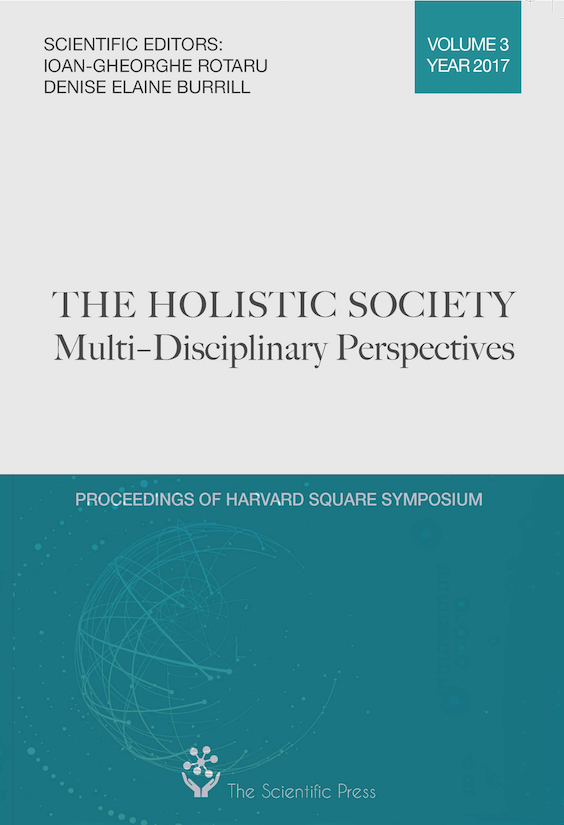
Keywords: Eastern Europe; Church–State; Third Way;
This paper surveys the historic relationships developed between Church and State in Eastern Europe during the past two millennia, and claims that—in light of their path dependence—the Orthodox Churches can play a positive role within the solidification process of the European Union. Based on ecclesiology, spirituality and historical records, national Orthodox Churches had been consistent assets in the public life; never attempting to eliminate (completely) the secular political power, but always willing to work it. A hiatus is also introduced with regard to the ambivalent relationship between nationalism and Orthodoxy.
More...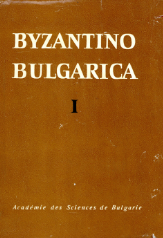
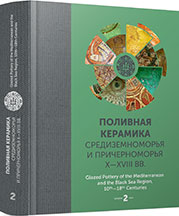
Keywords: Bulgaria; Byzantine period; glazed wares; sgraffito wares; painted wares; typology
This study presents glazed pottery from the medieval settlement near Polski Gradec village, occupied during the 11th—12th century. There are three main groups of glazed vessels: plain wares, painted wares and sgraffito wares. They are compared with the glazed pottery from various centres from the Byzantine cultural circle. According to the colour of the clay, the plain wares are divided into two groups — white wares and red wares. The white clay pottery is presented by two classes — “undecorated wares” and Persian lusterware with light blue glaze. The red clay pottery consists of the classes “Brown glazed ware”,“Spatter Painted Ware” and Sgraffito Ware. There are three sgraffito groups — Fine Sgraffito — which has three styles: “Fine style”, “Spiral style”, “Developed style” — “Champlevée”, and the so-called “Bulgarian sgraffito”. Plates of the known class of the “Painted sgraffito” were not found in the settlement. The Painted Wares belong to the “Green and brown painted wares” class and the vessels are divided into three groups.The analysis of the glazed pottery from the territory of the Byzantine cultural circle let us identify the production centres of particular groups of vessels. This raises the question about the trade routes and the circulation of the glazed pottery. It also helps us understand the trade ties in and out of the Byzantine Empire.
More...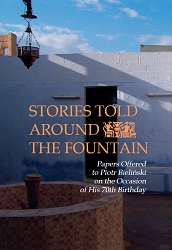
Keywords: Gerasa/Jerash; Byzantine painting; diptych; Jafnid
A miniature bone diptych found in the so-called Umayyad House,in the fill of an earlier cistern, presents the images of a man anda bejewelled lady, both on a gilded background. The man seems tobear royal attributes and is tentatively identified here as the Jafnidruler al-Mundhir (569–581). This diptych is the best preserved ofa short series of apparently identical objects on record.
More...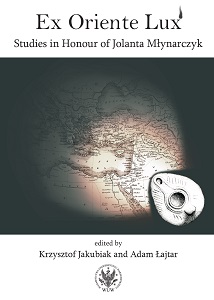
Keywords: Hellenistic vessels; Phoenicia; Chhim; Lebanon
Chhim is located in the foothills of central Lebanon, 10 km to the east of the Mediterranean coast and about 20 km north-east of Sidon. During the Roman and Byzantine periods, the area of Chhim was one of the most active production centres of olive oil and wine in the central Phoenician area. The results of the fieldwork carried out in the area of Chhim and the analysis of the pottery recovered during this work demonstrated that the site had not been regularly settled until the turn of the eras. Fragments of Hellenistic vessel forms found underneath the second century AD temple should be linked to the religious practices that took place there in the period prior to the establishment of the settlement.
More...
Keywords: Late antique Palestine; Hippos; Susita; Decapolis; North-West Church; Ionic order; Roman and Byzantine architecture
Between 2000–2009, the Polish archaeological team under the direction of Jolanta Młynarczyk excavated the so-called North-West Church at Hippos (Susita), one of the cities of the Decapolis located on the eastern shore of the Sea of Galilee. The excavations yielded a rich body of evidence pertaining, among other things, to the various aspects of the church architecture and decoration in Byzantine-Umayyad Palestine. This article is a preliminary summary of the architectural decoration of the church which was built in the sixth century and finally destroyed in the earthquake of 749. It includes the presentation and discussion of the architectural elements like capitals, columns, and column bases. The capitals belong to the so-called blocked-out family of capitals representing the simplified version of the Ionic order. This type of capital has not yet been the topic of systematic and detailed studies, despite the fact that it is often foundas an architectural element in several buildings in the cities of the northern Decapolis, such as, for example, Gadara and Abila. The monolithic column bases used in the church are of the Attic-type, widespread in the eastern Mediterranean from the Herodian period onwards.
More...
Keywords: church; sacral space; restoration; earthquake; Early Islamic period; Jund al-Urdunn
The following paper attempts to examine the process of narrowing of sacral space in churches during the Early Islamic period through the prism of urban changes in the cities of Jund al-Urdunn. An analysis of selected examples shows that after the destruction caused by earthquakes, many churches were only partially restored. Because of the enormous restoration efforts or decreasing needs of Christian communities, they were usually reduced only to the area of the nave or aisles, leaving the remaining parts of the previous edifice in a state of ruin. The phenomenon under discussion seems to be an underestimated aspect of the remarkable continuity of sacral topography during the first centuries after the Islamic conquest. It can be considered also as a symptom of a changing approach to the urban space and the particular resilience of Christians.
More...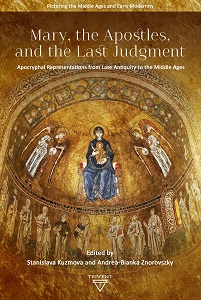
Keywords: Luzhany; Bukovina; Moldavian art; Last Judgment; eschatology; death; senses; pseudepigrapha; hagiography
Erected in 1453-1456 and situated in Northern Bukovina (today in Ukraine), the Church of Ascension in Luzhany represents the oldest extant witness of medieval Moldavian monumental art. The scenes depicting the “death of the righteous” and the “death of the sinner” from its Last Judgment cycle are analysed here according to their literary sources, which include Old Testament pseudepigrapha and medieval hagiographic literature. Based on the implications from these extra-biblical sources, it is argued that the eschatological focus of these two scenes is reinforced by the sensorial experience associated with the moment of death.
More...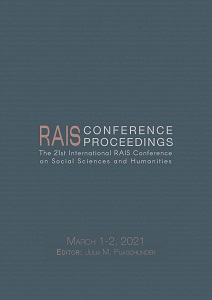
Keywords: Legal conscience; ancient times; legal work; legal norms
Legal consciousness has been and remains an integral part of the historical evolution of human society, and even more, it, in the context of the historical process of development of human society is identified as a phenomenon that drives, complements and defines social relations and reflects them in the norms of law, or consciousness is a superior form of reflection of the objective reality, proper only to human.
More...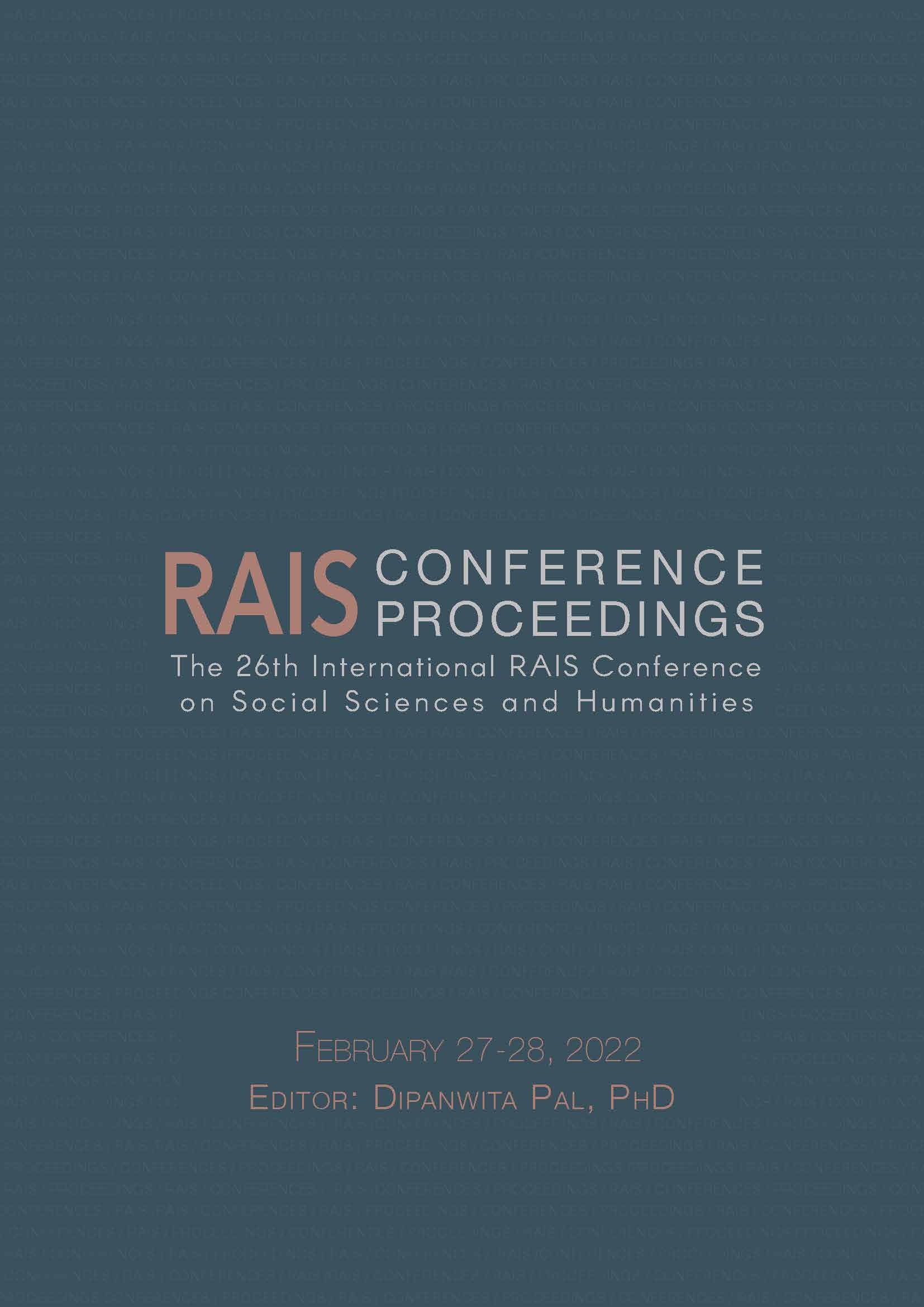
Keywords: 536 CE; calamities; Justinian; Church leadership
Modern scholars consider that the worst year in the history of humankind was 536 CE. Since there was no separation between the Church and the State in the Byzantine Empire, the predominantly Christian population who had endured the calamities of the year was let down by both religious and political central institutions. When centralized institutions fail, local chaos often ensues. As is most often the case, the first to suffer are those most vulnerable – the poor and the lowly. Moreover, in the vacuum created by the disregard of the Church, masses of people looked for answers in religious superstition, while showing a disinclination to trust the science of the day. Others developed a sense of hatred and suspicion towards foreigners, whom they blamed for the ongoing calamities. The safety measures that saved the lives of many came from the local administrators or the people themselves, not from the central institutions.
More...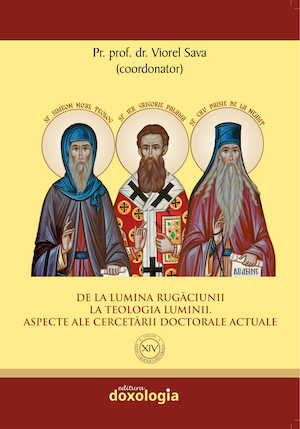
Keywords: Holy Spirit; Symeon the “New Theologian”; prayer; vision of light; possession of the Spirit; transformation;
Symeon is representative of Christian maximalism, which makes no concessions to human weakness. Preacher of the μετάνοια, in love with Christ, he directs himself entirely to the vision of God or the vision of light. Therefore, on every page of his writing, he never tires of asking his readers and listeners to renounce everything in order to receive the Holy Spirit. Only through the possession of the Spirit is the perfect transformation to be achieved, which makes us into gods.
More...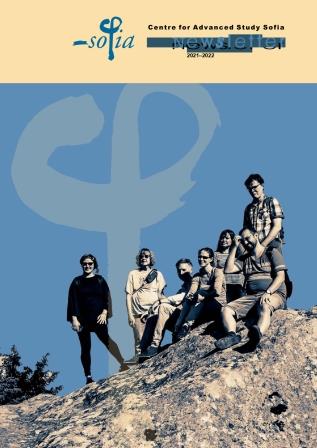
Articles, pictures and interviews can be reprinted only with the consent of the publisher.
More...